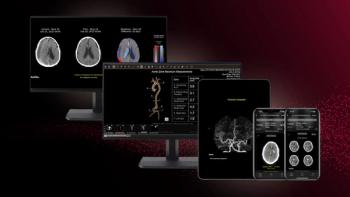
CTA Superior to SPECT-MPI in Detecting CAD
Non-invasive CTA is more accurate in detecting coronary artery disease among symptomatic patients than SPECT-MPI.
Coronary CT angiography (CTA) is more accurate than single-photon emission CT-acquired myocardial perfusion imaging (SPECT-MPI) in diagnosing coronary artery disease, according to a study published in
Researchers from the US, Japan, and Brazil, sought to compare the accuracy of SPCET-MPI and CTA in the diagnosis of coronary artery disease (CAD).
A total of 391 symptomatic patients from 16 hospitals in eight countries were prospectively enrolled in the study after they had been referred for a cardiac catheterization. All underwent CT angiograms, followed by catheter-based coronary angiographies. Within two months of initial testing, all underwent exercise stress tests.[[{"type":"media","view_mode":"media_crop","fid":"43459","attributes":{"alt":"","class":"media-image media-image-right","id":"media_crop_5342151013827","media_crop_h":"0","media_crop_image_style":"-1","media_crop_instance":"4737","media_crop_rotate":"0","media_crop_scale_h":"0","media_crop_scale_w":"0","media_crop_w":"0","media_crop_x":"0","media_crop_y":"0","style":"float: right;","title":"Armin Zadeh, MD, PhD","typeof":"foaf:Image"}}]]
“The area under the receiver operating characteristic curve was used to evaluate the diagnostic accuracy of CTA and SPECT-MPI for identifying patients with CAD defined as the presence of one or more coronary artery with 50 percent or more lumen stenosis by quantitative coronary angiography,” the authors wrote.
The results showed that CTA was better than SPECT-MPI in identifying CAD. CT angiograms accurately detected or ruled out artery blockages in 91% of patients, compared with 69% for stress testing.
Among a subgroup of 111 patients with very high-risk disease, the diagnostic accuracy of CT angiograms was 96%, compared with 80% for stress testing.
The results were similar for patients who had no history of CAD, as well as those with secondary end points of 70% or more stenosis and multivessel disease. The only patients in the study who did not do better with CTA were those who had a calcium score of 400 or higher, and those with a high-risk anatomy.
"No tests is 100 percent accurate 100 percent of the time, but our findings indicate CT angiograms get pretty close to that coveted threshold," lead investigator Armin Zadeh, MD, PhD, associate professor of medicine at the Johns Hopkins University School of Medicine in Baltimore, MD, said in a release.
Newsletter
Stay at the forefront of radiology with the Diagnostic Imaging newsletter, delivering the latest news, clinical insights, and imaging advancements for today’s radiologists.



























